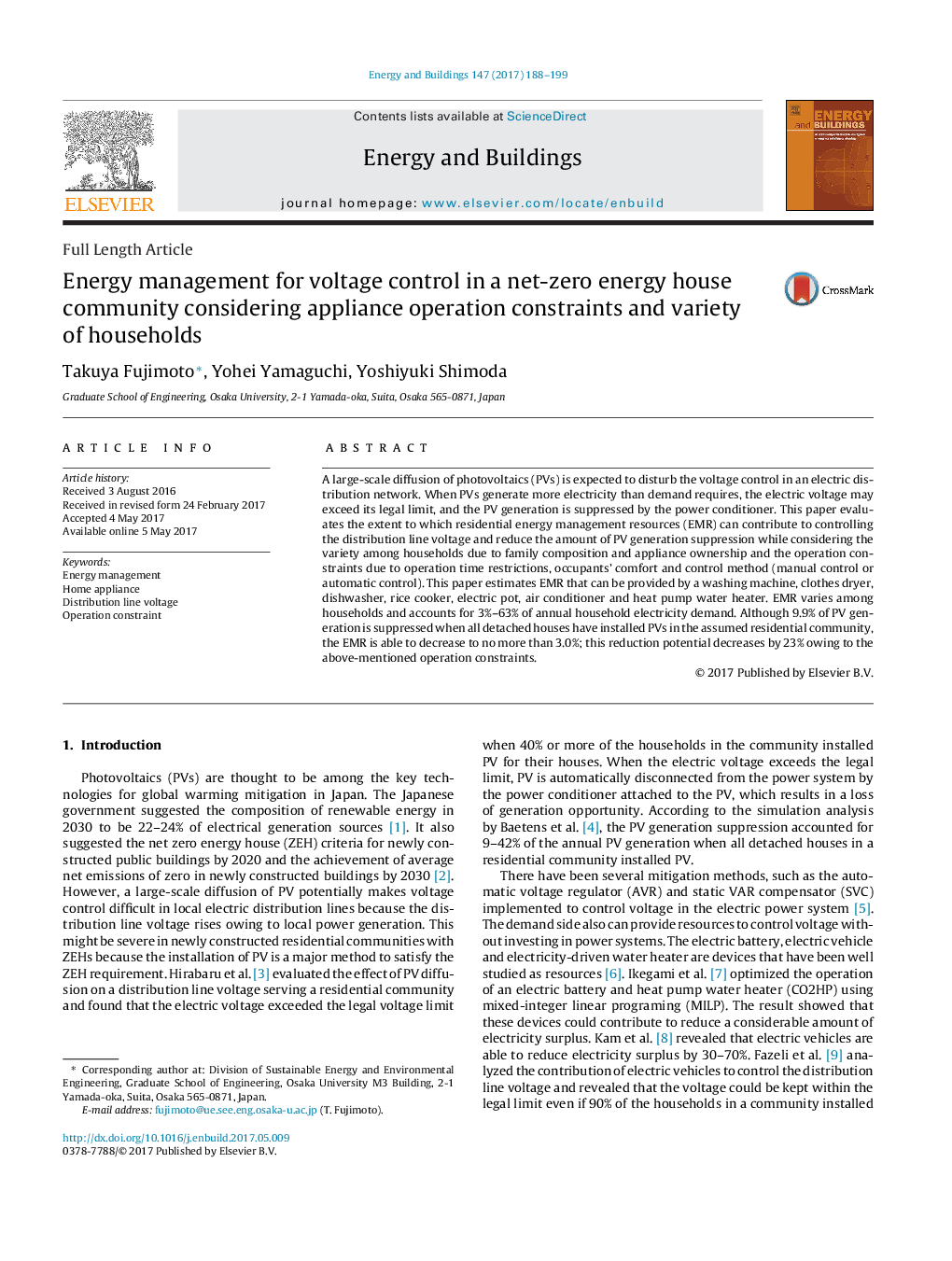| Article ID | Journal | Published Year | Pages | File Type |
|---|---|---|---|---|
| 4919158 | Energy and Buildings | 2017 | 12 Pages |
Abstract
A large-scale diffusion of photovoltaics (PVs) is expected to disturb the voltage control in an electric distribution network. When PVs generate more electricity than demand requires, the electric voltage may exceed its legal limit, and the PV generation is suppressed by the power conditioner. This paper evaluates the extent to which residential energy management resources (EMR) can contribute to controlling the distribution line voltage and reduce the amount of PV generation suppression while considering the variety among households due to family composition and appliance ownership and the operation constraints due to operation time restrictions, occupants' comfort and control method (manual control or automatic control). This paper estimates EMR that can be provided by a washing machine, clothes dryer, dishwasher, rice cooker, electric pot, air conditioner and heat pump water heater. EMR varies among households and accounts for 3%-63% of annual household electricity demand. Although 9.9% of PV generation is suppressed when all detached houses have installed PVs in the assumed residential community, the EMR is able to decrease to no more than 3.0%; this reduction potential decreases by 23% owing to the above-mentioned operation constraints.
Keywords
Related Topics
Physical Sciences and Engineering
Energy
Renewable Energy, Sustainability and the Environment
Authors
Takuya Fujimoto, Yohei Yamaguchi, Yoshiyuki Shimoda,
